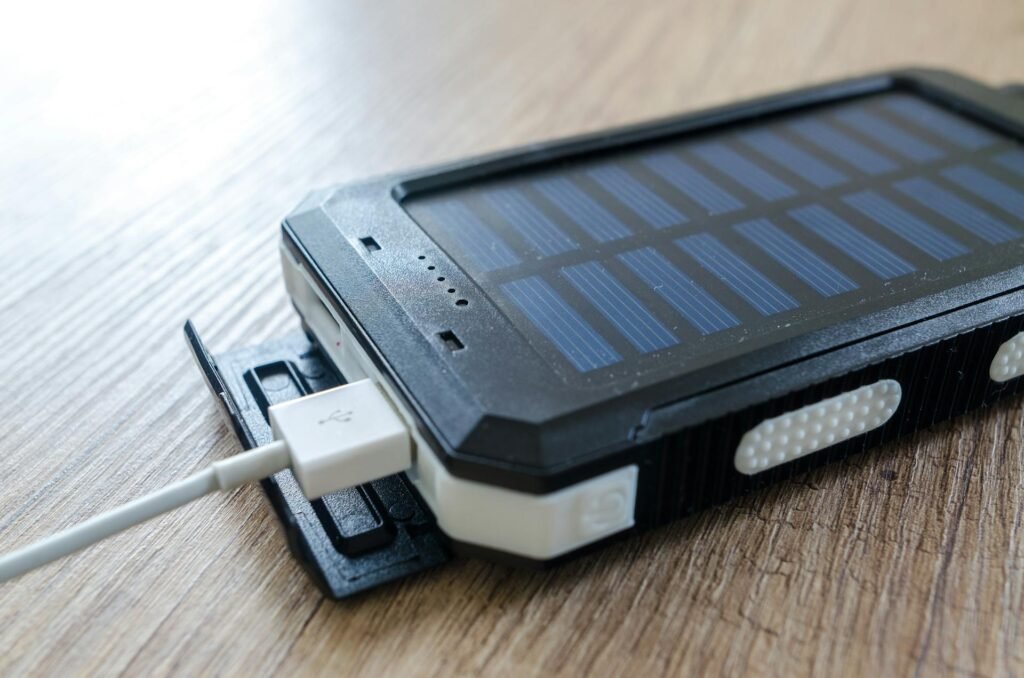
In the era of the global clean – energy revolution, Lithium Battery Export has become a significant part of the international trade landscape. Lithium batteries, as the cornerstone of modern energy – storage solutions, are experiencing a remarkable upsurge in demand worldwide. For lithium – battery export companies, the export – tax – rebate policy is a game – changer, offering a vital opportunity to reduce costs and enhance competitiveness.
However, to fully leverage this policy, strict adherence to the shipping and declaration requirements for lithium batteries as dangerous goods is non – negotiable. This article will explore the intricate relationship between Lithium Battery Export and export tax rebates, explain why Dangerous Goods (DG) declaration is a must – have for tax – rebate eligibility, and provide a practical guide for a seamless export process.
1. Understanding Lithium – Battery Exports: Why Must They Be Shipped and Declared as Dangerous Goods (DG)?
Lithium Battery Export is governed by strict international shipping regulations due to the unique chemical nature of lithium batteries. They are officially classified as Class 9 dangerous goods. This classification mandates that Lithium Battery Export cannot follow the same route as regular cargo. Instead, it requires a specialized dangerous – goods shipping process. Key steps include using compliant Dangerous Goods Containers (DG containers) and making proper Dangerous Goods declarations.
Core Concepts
In the realm of international trade, export tax rebates are contingent upon the legal and compliant completion of export customs clearance. For Lithium Battery Export, compliance boils down to strict adherence to dangerous – goods shipping and declaration protocols. Any attempt to export lithium batteries as general cargo is a serious violation known as “false declaration and concealment”. According to industry reports, numerous cases occur each year where shipments are seized, and companies face hefty fines due to such false declarations. This short – sighted approach not only results in significant financial losses but also disqualifies companies from the export – tax – rebate program.
Clarification of Common Misconceptions
- “My batteries are safe, no need for DG shipping”: This belief is completely off – base. All lithium batteries, regardless of their size or capacity, must be declared in accordance with regulations. Even small lithium batteries, seemingly harmless in daily use, can pose risks such as short – circuits and fires during transportation due to factors like temperature, humidity, and vibration. Therefore, proper handling as dangerous goods is essential.
- “DG shipping is too costly and complicated”: While it’s true that DG shipping incurs additional costs and a more complex process, it is the only legal option. The risks associated with non – compliant shipping are extremely high. If caught by customs, companies may face substantial fines and a severe drop in their customs credit rating, which can have a long – term negative impact on their export business.
Common UN Numbers for Lithium Batteries
- UN3480: Represents lithium – ion batteries, the most prevalent type in consumer electronics such as smartphones, tablets, and laptops.
- UN3481: Applies to lithium – ion batteries packed with or installed in devices, like Bluetooth speakers and power banks.
- UN3090: Refers to lithium – metal batteries, known for their high energy density but requiring extra safety precautions during transportation.
- UN3091: Covers lithium – metal batteries packed with or installed in devices, often found in high – end watches and medical devices.
- UN3171: Encompasses battery – powered vehicles or equipment, such as electric bicycles and scooters.

2. Conditions for Export Tax Rebates: Why is DG Declaration a Prerequisite for Tax Rebates?
In the context of Lithium Battery Export, export tax rebates are a crucial incentive for businesses. They involve refunding the value – added tax and consumption tax paid during the domestic production and circulation of exported goods. For companies to claim these tax rebates, they must provide solid evidence to the tax authorities that the goods have been legally exported.
Logical Relationship between DG Declaration and Export Tax Rebates
- Compliant Customs Clearance is Key: Tax authorities conduct thorough checks on customs data when processing tax – rebate applications. For Lithium Battery Export, only shipments that have completed the export process in full compliance with regulations are eligible for tax rebates. Any omission of the DG declaration will lead to an incomplete customs record, likely resulting in the rejection of the tax – rebate application.
- DG Declaration is an Integral Part of Compliance: For Lithium Battery Export, making a proper DG declaration to the maritime bureau is a mandatory step. Skipping this step creates significant flaws in the customs – clearance record. In subsequent inspections, non – compliant declarations can lead to not only the rejection of tax – rebate applications but also the recovery of previously received tax rebates and severe penalties.
- Document Consistency: All documents submitted during the tax – rebate application process, including the customs declaration form, must be consistent with the DG declaration and packing details. Any discrepancies in these documents will raise red flags during the tax – authority review, jeopardizing the tax – rebate approval.
Summary
For Lithium Battery Export companies, completing the DG declaration is an essential part of a legal export process and a fundamental requirement for obtaining export tax rebates. Without a proper DG declaration, a valid export record cannot be established, and companies will lose their eligibility for tax rebates.
3. Specific Policies and Tax Rates for Export Tax Rebates on Lithium Batteries
The Chinese government has implemented favorable policies for Lithium Battery Export. According to the State Administration of Taxation, the following tax – rebate rates apply:
- Commodity Code 85076000: Lithium – ion batteries enjoy a 13% export – tax – rebate rate, reflecting the government’s support for high – tech product exports.
- Commodity Code 85065000: Lithium primary batteries and battery packs also have a 13% export – tax – rebate rate.
These relatively high tax – rebate rates are a strong incentive for Lithium Battery Export companies. For instance, a company exporting lithium batteries worth $1 million can receive a tax rebate of $130,000, which can be reinvested in R & D or business expansion.
4. Practical Guide: How to Complete DG Container Transportation, Declaration, and Tax – Rebate Application?
Step 1: Pre – export Preparation (Booking Stage)
- Obtain Key Documents:
- Dangerous Goods Packaging Certificate: This certificate, also known as the “Certificate of Appraisal Results of the Use of Packaging for Exporting Dangerous Goods”, is essential for Lithium Battery Export. It verifies that the packaging meets the strict standards for transporting dangerous goods.
- MSDS: The Material Safety Data Sheet provides detailed chemical and safety information about the lithium batteries. It must be in English with all 16 items complete to meet international shipping requirements.
- UN38.3 Test Report: This report confirms that the lithium batteries have passed a series of safety tests as per the United Nations’ “Recommendations on the Transport of Dangerous Goods”, ensuring their safe transportation.
- Book in Advance: Given the complexity of DG shipping, companies involved in Lithium Battery Export should apply for DG space with shipping companies at least 7 – 10 working days in advance. Along with the application, relevant documents such as the shipping note, MSDS, and a scanned copy of the dangerous – goods packaging certificate should be submitted for review.
Step 2: Dangerous Goods Transportation and Declaration (DG Container Operation)
- Packing Requirements: Lithium batteries for export must be packed in a professional dangerous – goods warehouse by licensed inspectors. The “remote packing system” should be used to document the packing process through photos taken before, during, and after packing. This documentation ensures compliance with safety regulations and enables traceability.
- Maritime Declaration: Before the declaration deadline, companies should entrust a professional freight forwarder to submit a DG declaration to the maritime bureau via the “single window”. Necessary documents, including the original dangerous – goods packaging certificate, MSDS, and packing certificate, must be provided for review.

Step 3: Customs Declaration for Export
For Lithium Battery Export, companies need to submit a comprehensive set of documents to the customs, including the customs declaration form, invoice, packing list, contract, and declaration elements. The customs will carefully examine these documents to ensure compliance with all relevant regulations.
Step 4: Apply for Tax Rebate
- Handle Tax – Rebate Registration: Prior to applying for tax rebates, companies must register with the tax authorities. This registration is the first step towards obtaining tax – rebate eligibility.
- Prepare Tax – Rebate Documents: Companies should gather the following key documents:
- Customs Declaration Form (Export Tax – Rebate Copy): Proof of the legal export of goods.
- Export Sales Invoice: Records the sales details of the exported lithium batteries.
- Purchase Invoice: Demonstrates the procurement cost and the input tax paid.
- Foreign – Exchange Settlement Receipt or Bank Receipt Notice: Confirms the receipt of payment for the exported goods.
- (If applicable) Export Goods Waybill/Insurance Policy: Additional documentation to support the shipping and insurance of the goods.
- Monthly Declaration: Companies should submit a monthly tax – rebate declaration to the tax authorities before the 15th day of the month following the export. After a successful review, the tax rebates will be refunded to the company’s account.
5. Frequently Asked Questions (FAQ)
Q1: If my lithium batteries are installed in devices, do I still need to ship them as dangerous goods?
A: Absolutely. Lithium batteries installed in devices, corresponding to UN numbers UN3091 or UN3481, are still classified as Class 9 dangerous goods. Therefore, a DG declaration is required. However, the packaging requirements may differ from those of bulk batteries.
Q2: How long does the tax – rebate process take?
A: Generally, after all documents are submitted correctly and the application is reviewed, tax rebates are refunded within about 20 working days. However, the actual time may vary depending on local tax – authority efficiency.
Q3: How can I obtain a dangerous – goods packaging certificate?
A: Companies need to apply to the local customs and provide a series of supporting documents, including the “Application Form for Inspection of Packaging for Import and Export Goods”, “Certificate of Appraisal Results of Packaging Performance”, factory inspection records, and a classification and identification report of dangerous characteristics. After passing the inspection, the customs will issue the certificate.
Q4: What are the new regulatory changes in 2025 for Lithium Battery Export?
A: Companies should pay close attention to the new national standard GB 6944 – 2025 (effective October 1, 2025) and the IMDG Code 42 – 24 amendment. These regulations strengthen packaging requirements and classify sodium – ion batteries as Class 9 dangerous goods, similar to lithium batteries.
6. Conclusion and Suggestions
In summary, for Lithium Battery Export companies, using DG containers and completing DG declarations are non – negotiable steps. These measures are not only for safety but also a prerequisite for obtaining export tax rebates. The risks of false declaration and concealment are extremely high, and companies should avoid short – term gains at the expense of long – term losses.
Suggestions for Enterprises
- Compliance First: Companies should establish a strict compliance system to avoid any form of false declaration and concealment. Maintaining integrity is the key to long – term success in international trade.
- Strategic Planning: A well – thought – out plan for Lithium Battery Export is essential. Companies should allocate sufficient time for obtaining necessary documents, booking space, and making declarations to prevent last – minute mistakes.
- Professional Partnerships: Collaborating with experienced and qualified dangerous – goods freight forwarders can streamline the export process, minimize risks, and ensure successful tax – rebate claims.





